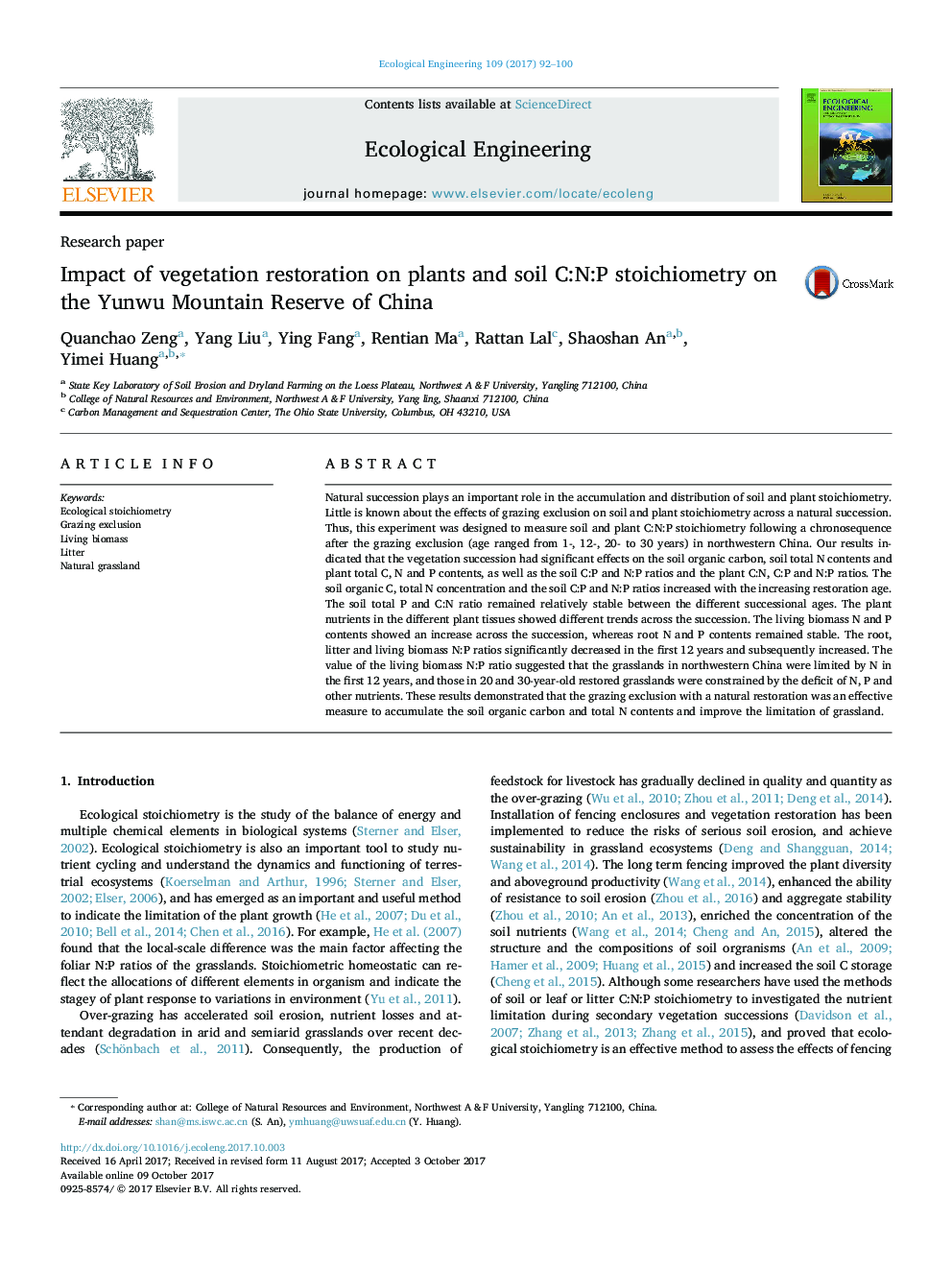| Article ID | Journal | Published Year | Pages | File Type |
|---|---|---|---|---|
| 5743648 | Ecological Engineering | 2017 | 9 Pages |
Natural succession plays an important role in the accumulation and distribution of soil and plant stoichiometry. Little is known about the effects of grazing exclusion on soil and plant stoichiometry across a natural succession. Thus, this experiment was designed to measure soil and plant C:N:P stoichiometry following a chronosequence after the grazing exclusion (age ranged from 1-, 12-, 20- to 30 years) in northwestern China. Our results indicated that the vegetation succession had significant effects on the soil organic carbon, soil total N contents and plant total C, N and P contents, as well as the soil C:P and N:P ratios and the plant C:N, C:P and N:P ratios. The soil organic C, total N concentration and the soil C:P and N:P ratios increased with the increasing restoration age. The soil total P and C:N ratio remained relatively stable between the different successional ages. The plant nutrients in the different plant tissues showed different trends across the succession. The living biomass N and P contents showed an increase across the succession, whereas root N and P contents remained stable. The root, litter and living biomass N:P ratios significantly decreased in the first 12 years and subsequently increased. The value of the living biomass N:P ratio suggested that the grasslands in northwestern China were limited by N in the first 12 years, and those in 20 and 30-year-old restored grasslands were constrained by the deficit of N, P and other nutrients. These results demonstrated that the grazing exclusion with a natural restoration was an effective measure to accumulate the soil organic carbon and total N contents and improve the limitation of grassland.
